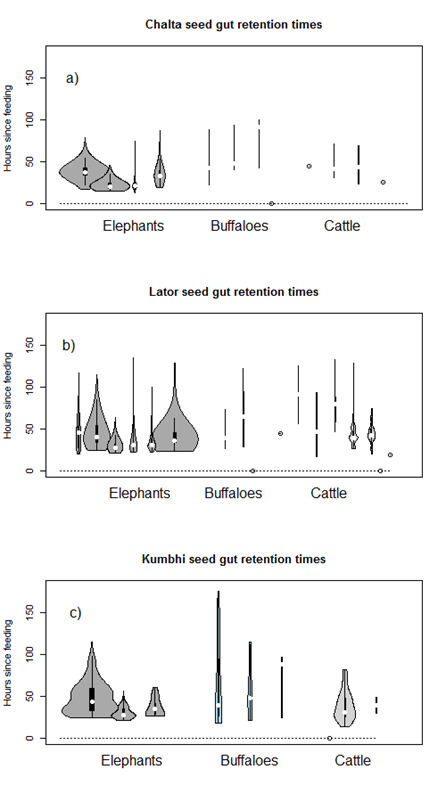
Ecological Archives E096-185-A4
Nitin Sekar, Chia-Lo Lee, and Raman Sukumar. 2015. In the elephant's seed shadow: the prospects of domestic bovids as replacement dispersers of three tropical Asian trees. Ecology 96:2093–2105. http://dx.doi.org/10.1890/14-1543.1
Appendix D. GRT violin boxplots for (a) chalta (D. indica), (b) lator (A. chaplasha), and (c) kumbhi (C. arborea) and a plot of the raw movement data for elephants and bovids
Fig. D1. GRT violin boxplots for (a) chalta (D. indica), (b) lator (A. chaplasha), and (c) kumbhi (C. arborea). Each violin illustrates the density of seed GRTs from one individual; solitary points indicate that all seeds had the same GRT. Violin scaling parameters are set based on the total number of seeds defecated by each individual. The plots show the large numbers of seeds defecated by elephants, and the lower number of seeds available from bovid dung. Many bovid GRTs have almost uniform distributions. Though comparable, buffalo maximum GRTs are a little higher than elephants’.
Fig. D2. Plot of the raw movement data for elephants and bovids, as well as the mean and standard deviation. The different scale on which elephants move is even more evident by comparing the top plot with the others. Note that elephants begin to move over 50 km in just 72 hours.